Embed Reports
The Embedded Script works by generating JavaScript code that you can use with another website, such as Confluence or an internal wiki. A qTest license is not required to view data from an Embedded Report. However, you will need the Insights Editor Admin Profile assigned to your User Name to use the Embed Script feature. This can be performed by a Site Administrator.
The Embedded Script is available for the following reports:
-
Reports in the Analysis section
-
Shared Dashboard
-
Any View in Explore Data
-
Saved Reports
Once embedded, these reports provide read-only access. The viewer will not be able to filter or drill down, as these reports are all static.
How to Embed a Script
-
Navigate to the desired report you want to view on another web page.
-
Select the filter icon
 , and the Filters menu opens.
, and the Filters menu opens. -
Select the
 button in the filter panel.
button in the filter panel.
Reports listed in the Explore Data and Saved Reports tab, contain the Embed Script
 icon for a quick way to copy the embedded script to your clipboard.
icon for a quick way to copy the embedded script to your clipboard.Reports listed in the Saved Reports>Manage tab have the embed script option available when you expand the list icon
 .
.
-
The embedded script will be generated and automatically copied to your clipboard.
-
Paste the embedded script.
Below is a screenshot of how the Quality Analysis report appears once you copy its embedded script to a website. This embedded report will remain static, so users will not be able to navigate through other features/sections of qTest Insights or drill-down into the data of the report without a qTest license. Note: The size of the embedded report is up to the container on your website, you can adjust it to how you desire.
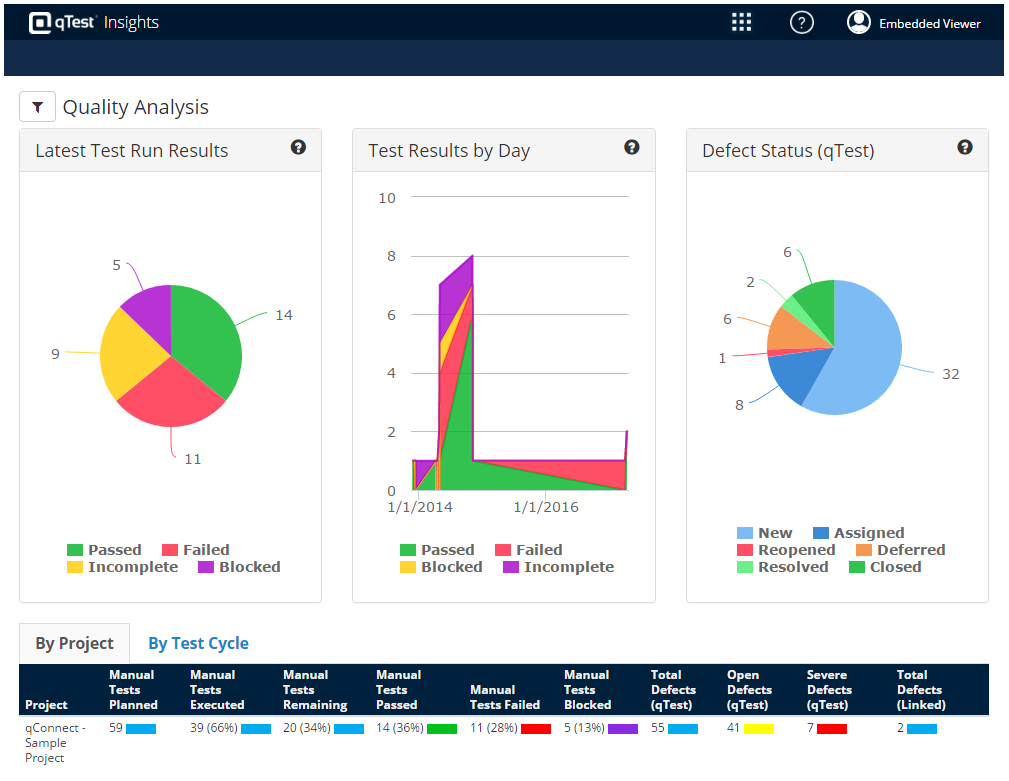
Embed Script Locations
You can find the "Generate Embedded Script" button in the Global filter  of the Analysis Reports, Shared Dashboards, Explore Data and Saved Reports.
of the Analysis Reports, Shared Dashboards, Explore Data and Saved Reports.
Individual reports in the Explore Data and Shared Reports offer the embed script icon ![]() .
.
Embed Shared Dashboard
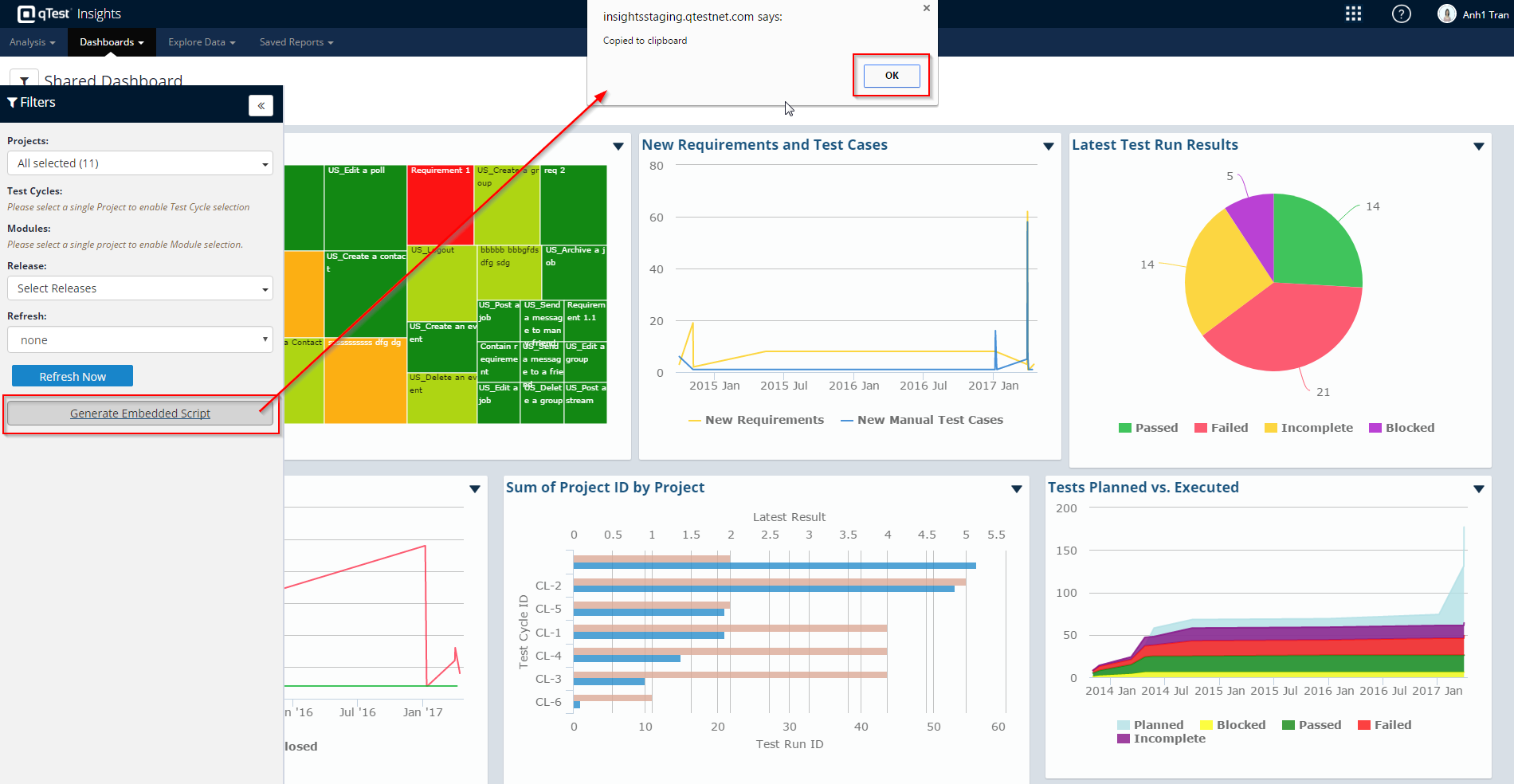
Embed Analysis Reports
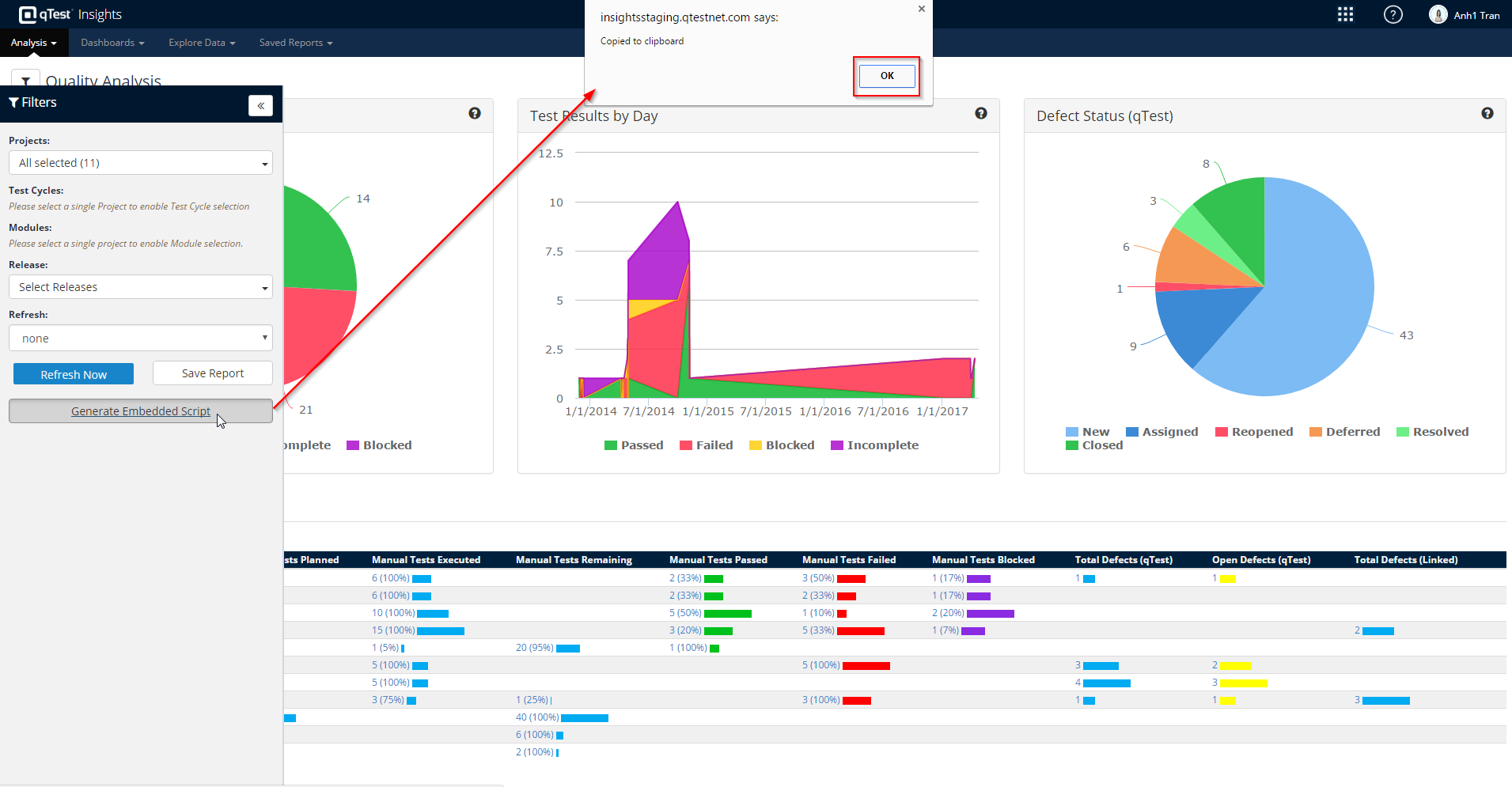
Embed Report with Explore Data
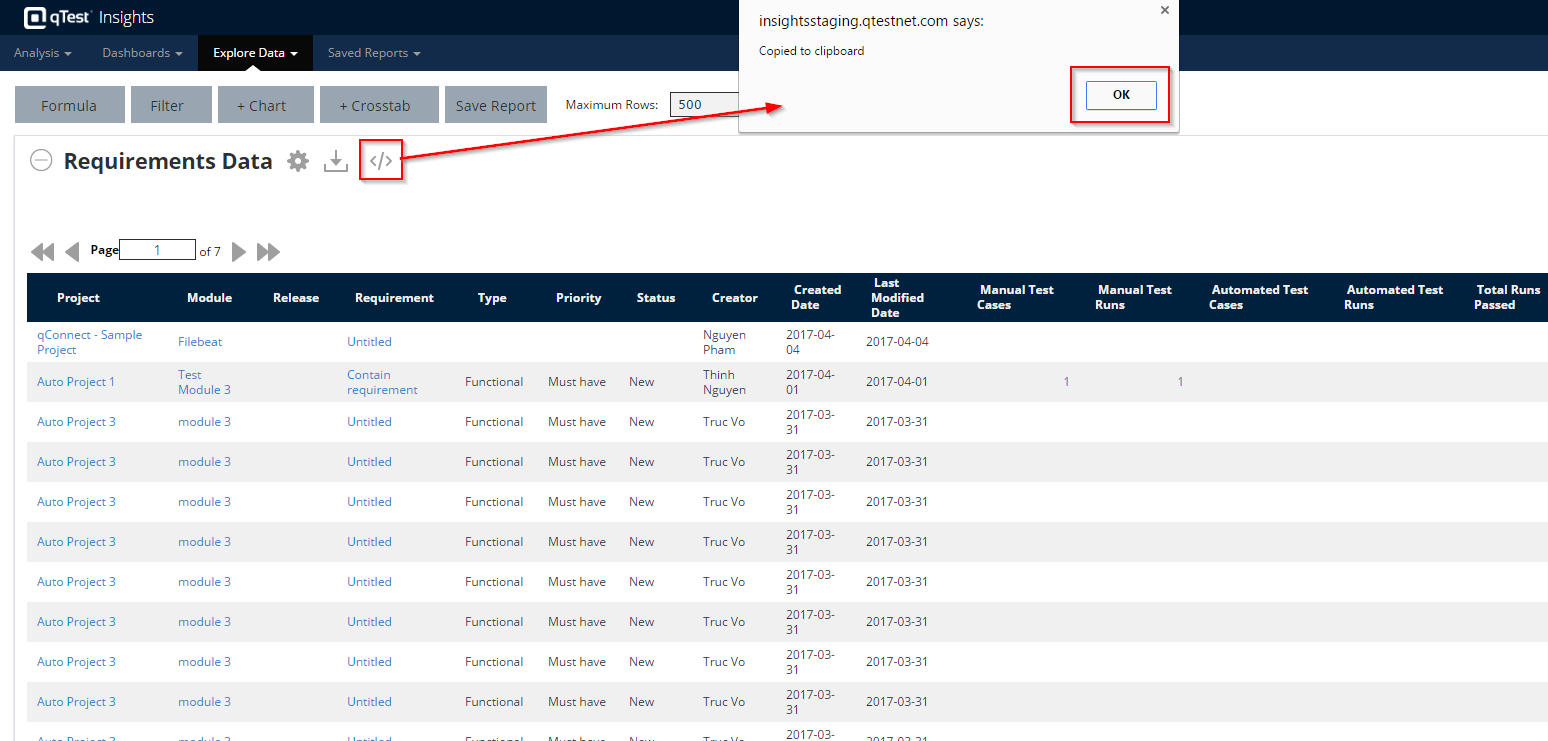
Embed a Saved Report
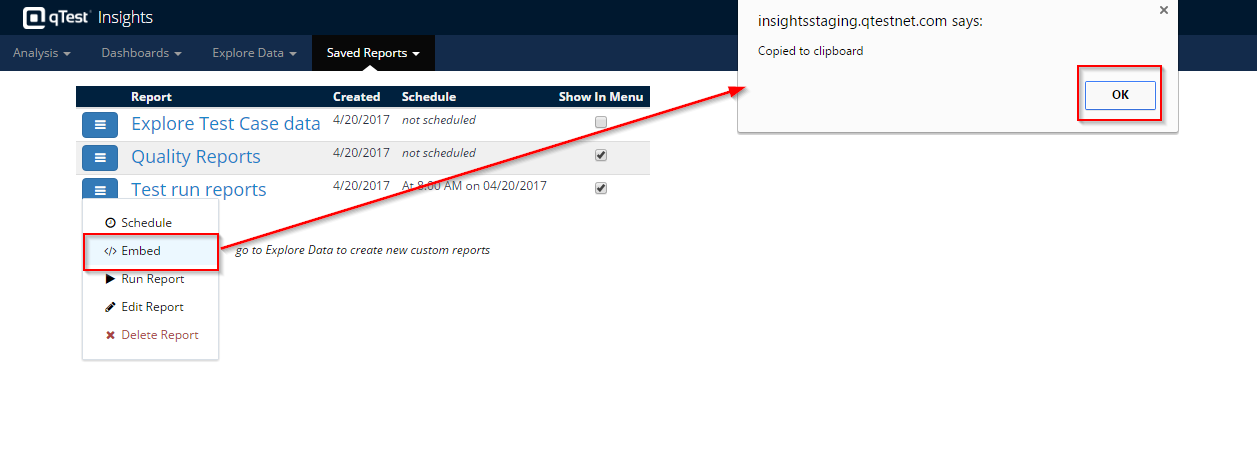

It is possible that the error above causes a conflict with your browser 'sessions.' This is due to our Global Filters which use a 'cookie' across your browser session to save your chosen filters. Therefore, the cookie will be carried throughout your browser regardless of the session.
Example: Once you select Insights from the 9-box in qTest Manager, the system creates a 'session' using the UserName and the associated UserRole (Editor or Viewer).
If you embed a script on that same browser session, in a new tab, the system will override the previous session and use the EmbeddedUserName and the associated EmbeddedRole. At this point, the Embedded viewer takes over the username at the right corner of your screen, and that EmbeddedRole limits the access.
To regain access to the original UserName AND UserRole, please click on the 9-box in qTest Manager, to reaccess Insights.
How to Embed a Report in Confluence
-
These instructions are for Confluence server. The HTML macro described below is not available for Confluence Cloud. You will need to find an HTML macro from the Atlassian Marketplace.
Embed a Report as an HTML Macro
-
Once you have copied the embedded report script to your clipboard, navigate to Confluence.
-
Open the Confluence page you would like to embed the report to.
-
Select the plus sign icon in the top toolbar.

-
Select the Other Macros option at the bottom of the dropdown menu.
-
In the search bar enter HTML on the Select macro widget.
-
Select the HTML option and then select Insert at the bottom of the widget.
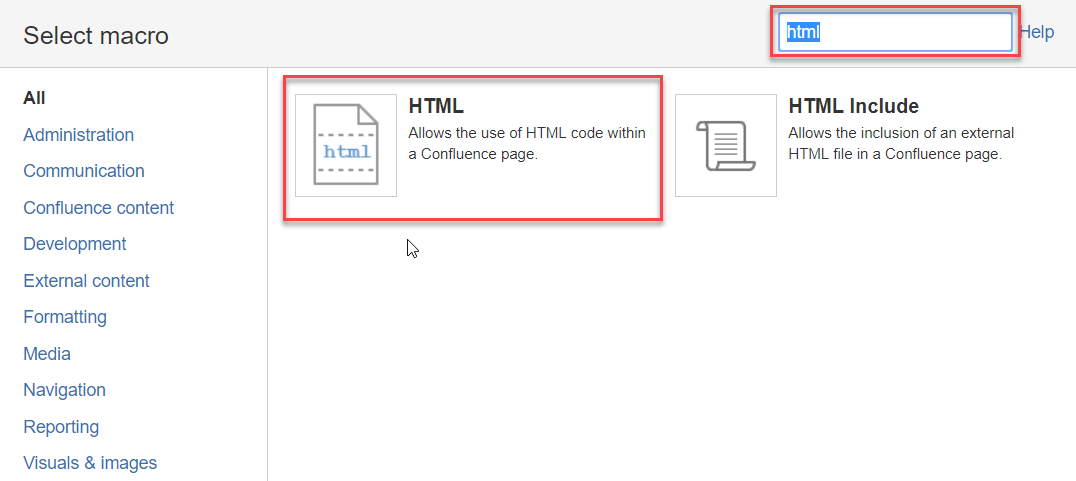
-
In the newly added HTML field, paste the embedded script you copied to your clipboard. Save.

-
The Insights report is now available in Confluence.
Embed a Report as an Iframe
While the HTML Macro method will work for most reports, this will not work if embedding Rapid Dashboard into Confluence. Instead, you must embed the Rapid Dashboard as an Iframe.
To do so, follow steps 1-4 from above, and then perform the following:
-
Search "Iframe." Select the Iframe option.

-
In the newly added Iframe field, paste the embed script. Your Rapid Dashboard is now embedded into Confluence.
Try This: Embed a Tests Executed vs Planned Report into Confluence Server
Follow the workflow in this video to embed your own Tests Planned vs Executed Report into Confluence Server.